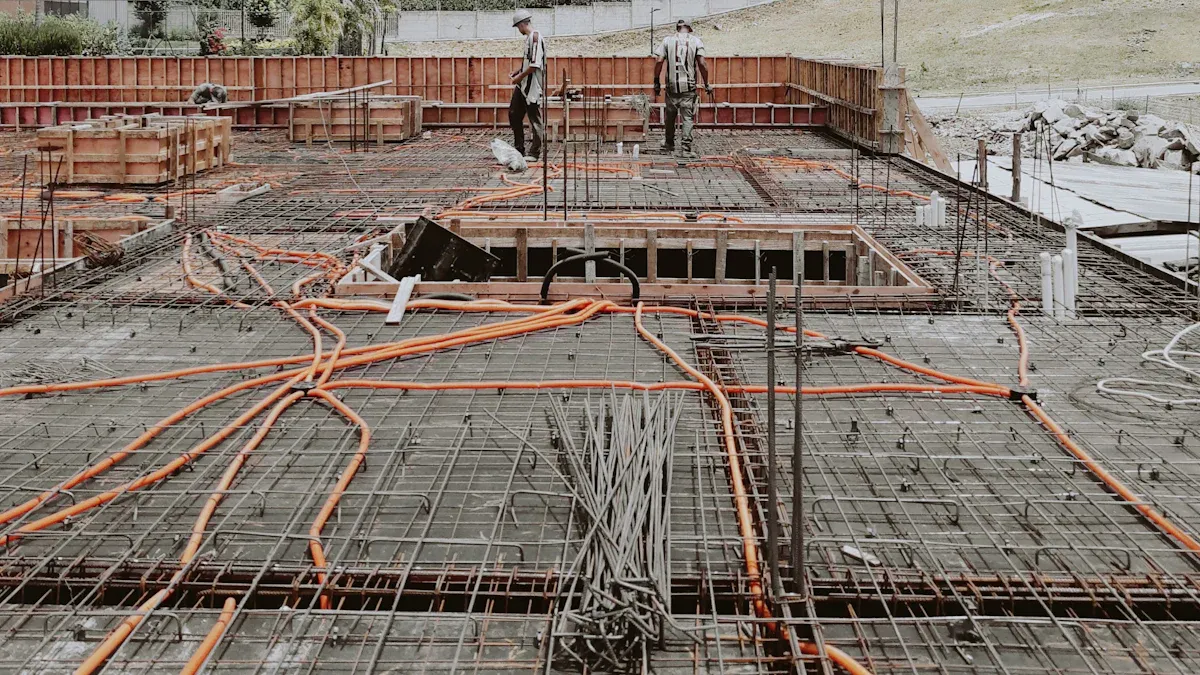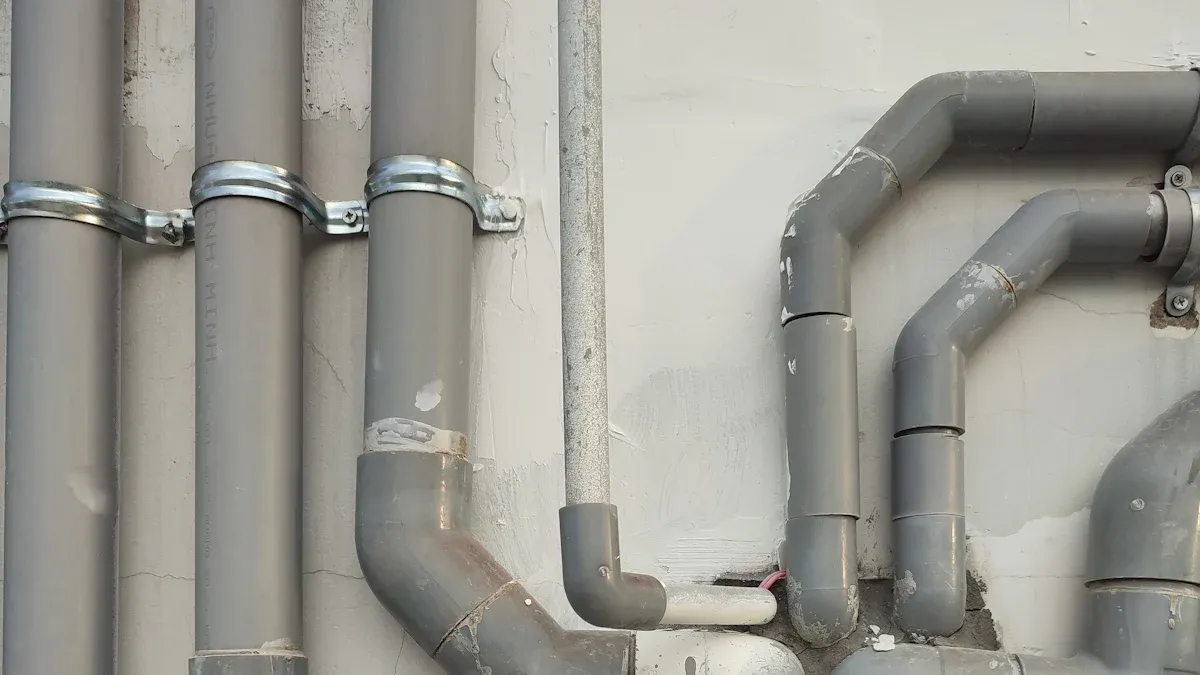
Quick and Easy Fittings enabled the project team to complete installations faster and with greater accuracy. The team achieved a 30% reduction in labor costs and fuel consumption. Project managers saw timelines accelerate. Stakeholders reported higher satisfaction.
Quick and Easy Fittings delivered measurable improvements in construction efficiency.
Key Takeaways
- Quick and Easy Fittings helped the team finish installations faster and with fewer mistakes, saving time and reducing costs by 30%.
- The fittings made work easier and safer by simplifying installation and cutting down on tool use and errors.
- Regular training, clear communication, and proper documentation helped the team adapt quickly and keep improving project quality.
Quick and Easy Fittings: Transforming Project Efficiency

Challenges Before Quick and Easy Fittings
Before the introduction of Quick and Easy Fittings, the project team faced several persistent challenges. Data management issues often slowed progress and created confusion. The team struggled with:
- Inconsistent, duplicated, or outdated data, which led to unreliable reports and poor decision-making.
- Security gaps that exposed sensitive information to cyberattacks and internal errors.
- Static reporting methods that limited the ability to plan for the long term or respond quickly to changes.
- Reports that failed to meet the needs of all stakeholders, sometimes providing too much detail or not enough.
- Invalid data values, such as misspellings and duplicates, which resulted in faulty analysis.
- Inconsistencies in names and addresses, making it difficult to maintain a complete view of project entities.
- Conflicting data across different systems, even when individual entries appeared correct.
- Time-consuming data enrichment tasks, including calculating key performance indicators and filtering information.
- Maintenance difficulties with custom-coded data preparation processes, which lacked documentation and scalability.
These obstacles increased the risk of errors, delayed project timelines, and raised costs. The team needed a solution that could address these issues and streamline operations.
What Makes Quick and Easy Fittings Different?
Quick and Easy Fittings introduced a new standard for efficiency and reliability. The system provided a user-friendly interface and simplified installation procedures. Workers no longer needed to rely on complex tools or specialized training. The fittings featured intuitive designs that reduced the likelihood of mistakes during assembly.
Project managers noticed immediate improvements in workflow. The fittings allowed for faster connections and minimized the need for rework. The team could focus on core construction tasks rather than troubleshooting installation errors. The product’s compatibility with existing systems also ensured a smooth transition, reducing downtime and disruption.
Implementation and Workflow Changes
The implementation of Quick and Easy Fittings required a shift in daily routines. The team adopted new installation protocols and received targeted training sessions. Supervisors monitored progress and provided feedback to ensure consistent quality.
The workflow became more streamlined. Workers completed installations in less time, and supervisors spent fewer hours on quality control. The project experienced fewer delays due to installation errors. Communication between departments improved, as everyone used the same standardized process.
Tip: Regular training and clear documentation helped the team adapt quickly to the new system.
The adoption of Quick and Easy Fittings transformed the project’s efficiency. The team achieved measurable gains in productivity and reduced overall costs.
Results, Lessons, and Best Practices with Quick and Easy Fittings

Quantifiable Time and Cost Savings
The project team measured significant improvements after adopting Quick and Easy Fittings. Installation times dropped by nearly one-third. Labor costs decreased as workers completed tasks faster and required less supervision. The project finished ahead of schedule, which allowed the client to open the facility sooner. These savings extended beyond direct labor. Reduced fuel consumption and fewer overtime hours contributed to lower overall expenses. Project managers tracked these metrics using weekly progress reports and cost analysis tools.
Fewer Installation Errors and Rework
Quick and Easy Fittings helped the team reduce installation errors. The intuitive design made it easier for workers to assemble components correctly the first time. Supervisors reported a sharp decline in rework requests. Quality control teams found fewer defects during inspections. This improvement led to smoother handovers between project phases. Stakeholders expressed greater confidence in the reliability of the finished work.
Lessons Learned and Recommendations
The project team followed a structured approach to capture lessons and improve future performance:
- They held a workshop with all stakeholders to share feedback and insights.
- The team set clear objectives for the session and encouraged open, blame-free communication.
- The commissioning manager documented key discussions and outcomes.
- A final report summarized recommendations and assigned follow-up actions.
- The team updated central databases to keep lessons learned accessible.
- Standard templates ensured consistent documentation.
- Project leaders tracked agreed tasks and implemented a closeout plan.
- The team addressed common issues such as communication, planning, and quality control.
- Roles and responsibilities remained clearly defined throughout the project.
- Reviews focused on improvement, using objective tools for evaluation.
Note: Regular reviews and clear documentation support continuous improvement in construction projects.
Quick and Easy Fittings delivered measurable improvements in project efficiency, cost savings, and stakeholder satisfaction.
- The project team documented strong audit evidence, including invoices and confirmations, to validate these results.
- This approach reinforced the value of innovative solutions and encouraged future adoption across the industry.
FAQ
What types of projects benefit most from Quick and Easy Fittings?
Commercial, industrial, and large-scale residential projects gain the most value. These fittings help teams save time and reduce errors on complex installations.
How do Quick and Easy Fittings impact project safety?
Quick and Easy Fittings reduce tool use and manual handling. Workers experience fewer injuries and less fatigue during installation.
Can teams integrate Quick and Easy Fittings with existing systems?
Yes. Most Quick and Easy Fittings offer compatibility with standard piping and fixtures. Teams can upgrade without major system changes.
Post time: Jun-25-2025
